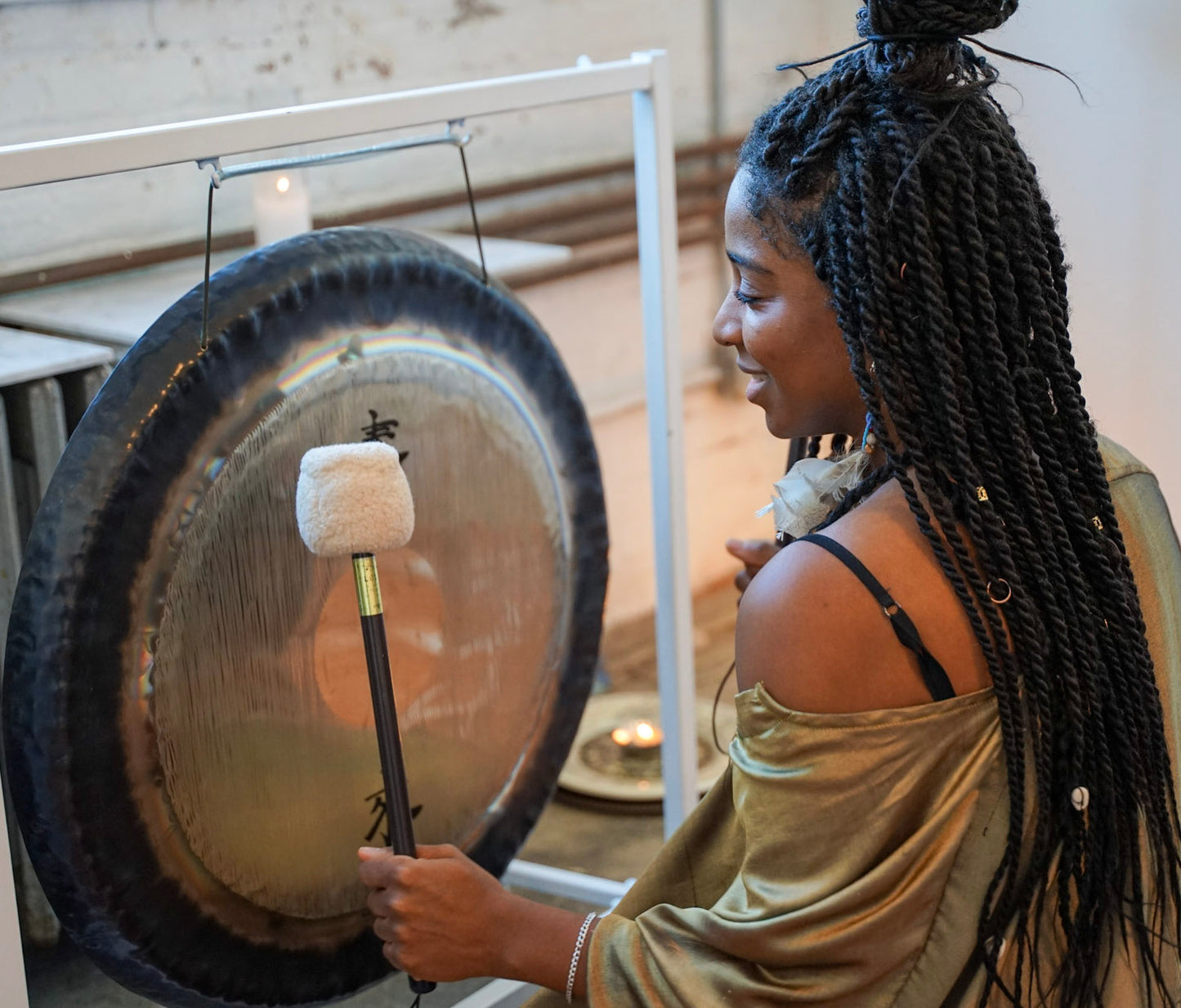
I’ve always been drawn to the power of sound. Music was a constant in my childhood home—instruments were everywhere. Jazz would waft into every room at any moment through my dad’s enormous speakers, as would my mom’s voice singing her way through our home. That was my normal. Sound, melody, became my safe space: soothing, uplifting—a haven. In retrospect, that I would wind up working in clinical sound seems fated. I discovered early on that music could change me from one moment to the next, and I knew there was something profound in that. I knew that music had the potential to change more than just emotional states, but I couldn’t quite put my finger on how.
The western medical sector has historically used sound to see inside the body, by use of ultrasonic waves. Known as ultrasound, these waves are a form of imaging that use frequency to create a picture of organs, tissues, and other structures inside the body. (Medline). It seems that for a great while scientific interest in sound stopped there. However, long before modern science adopted vibration, indigenous cultural practices around sound thrived. From ceremonies and rituals to the mundane every day, sound by way of the voice or instruments has been used to soothe or alter our emotional and, at times, physical bodies.
The study of cultural music and sound experiences is called ethnomusicology. This field of research dives deep into our anthropological history with instruments and their uses. But how did communities without modern technology know that sound was healing? What did they understand that we didn’t for so long? And why now has it drifted into western pop culture such that you may now witness ritual and/or healing sound on TV,, in your local wellness studio, or in health facilities?
What perhaps wasn’t understood before, but is known now, is how sounds affect our body—or more specifically, our nervous system. The vagus nerve is the great connector that travels from our brain and meets every organ, acting like the telecom for our nervous system. It is meant to send parasympathetic messaging (rest and digest) throughout our bodies when we are safe and sympathetic messaging when we are in danger (fight, flight, freeze). It is a part of our biology that protects us. However, our modern world can be overwhelming. The vagus nerve, when notified about external stressors repeatedly, becomes wired for it, becoming more responsive to danger and less responsive to ease. This can manifest into a condition known as chronic stress.
Enter sound and the other mindfulness practices. Sound can retrain the vagus nerve and our nervous systems altogether. It acts initially as a notification system that tells your brain you’re safe. With regular practice, we relearn how to relax, and, with intention, we can teach our bodies to relax on cue. This has huge implications medically. PTSD, for example, occurs after a trauma (singular or experienced over a period) and leaves an imprint on the psyche. When triggered, this stress imprint forces the person to relive that trauma at any moment. We see symptoms of PTSD in victims of abuse, those that have had near death experiences, or those at the end of their life, for example. This can lead to depression, anxiety and even physical symptoms such as high blood pressure and cardiac episodes if left untreated. Sound, a complimentary therapy, can support our healing processes by encouraging us to find equanimity. Over time, our vagus nerve knows when we are safe and well. From this ease we may see a lessening of symptoms and ultimately a better quality of life.
When bringing mindfulness or ritual into your life, consider sound. Sound as a restorative tool is officially in the mainstream. Singing bowls and gongs have made appearances on reality TV, and the complementary medicines now hold seats at prestigious institutes like NIH and Memorial Sloane Kettering. I have found that pairing my sound practice with a cacao practice has magnified the positive effects of these two healthy rituals. When paired regularly in a ritual cacao experience, you may notice greater emotional resilience and a greater feeling of wellbeing.
My curiosity about the effects of sound has led me to develop a research study. This study is designed to test the effects of sound on our ability to cope with stress, particularly around RBTS (race based traumatic stress). If you are interested in participating in this study, please email info@brittanysimone.com. You may be in awe of how you flourish from the richness of this experience.
